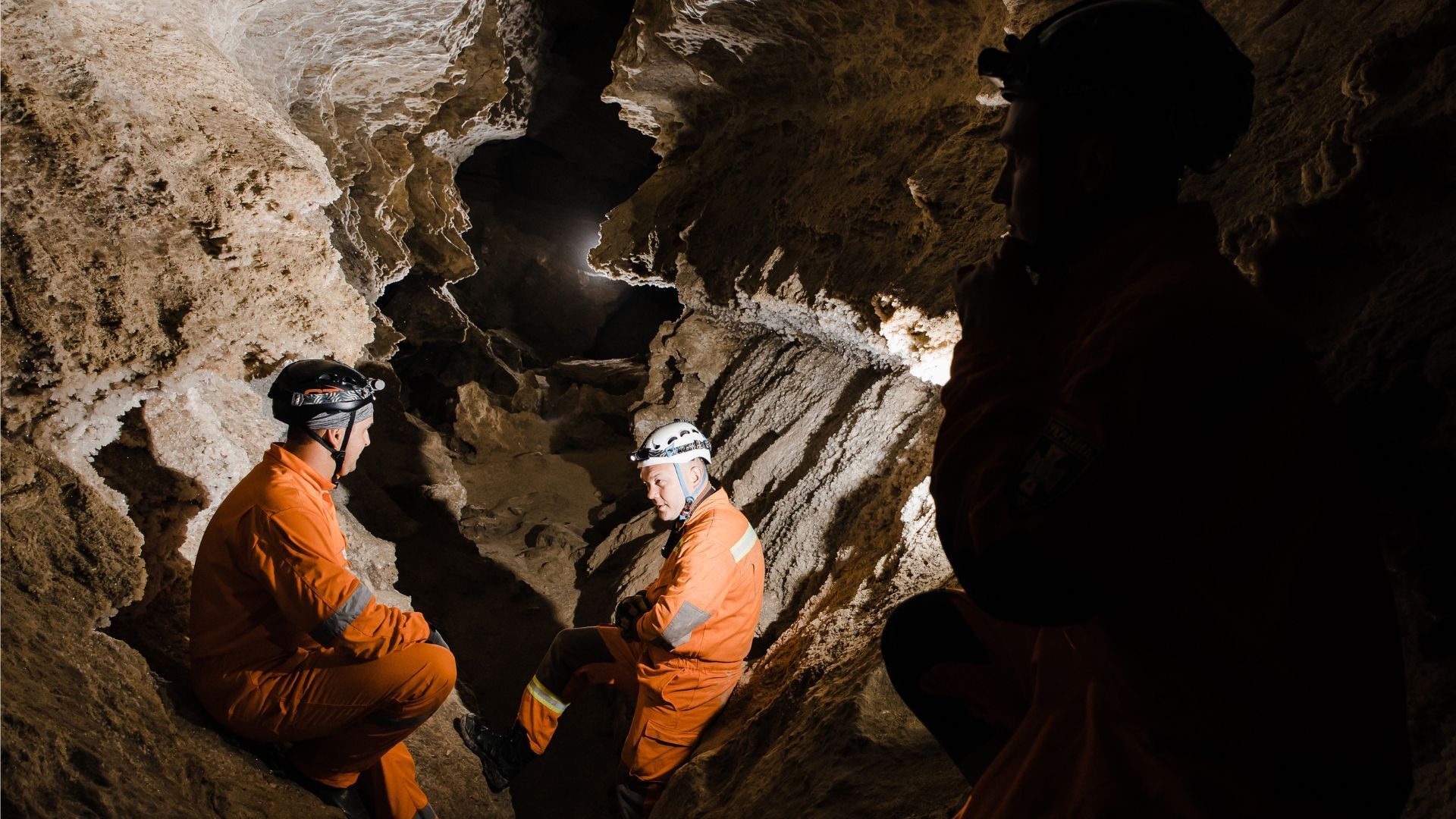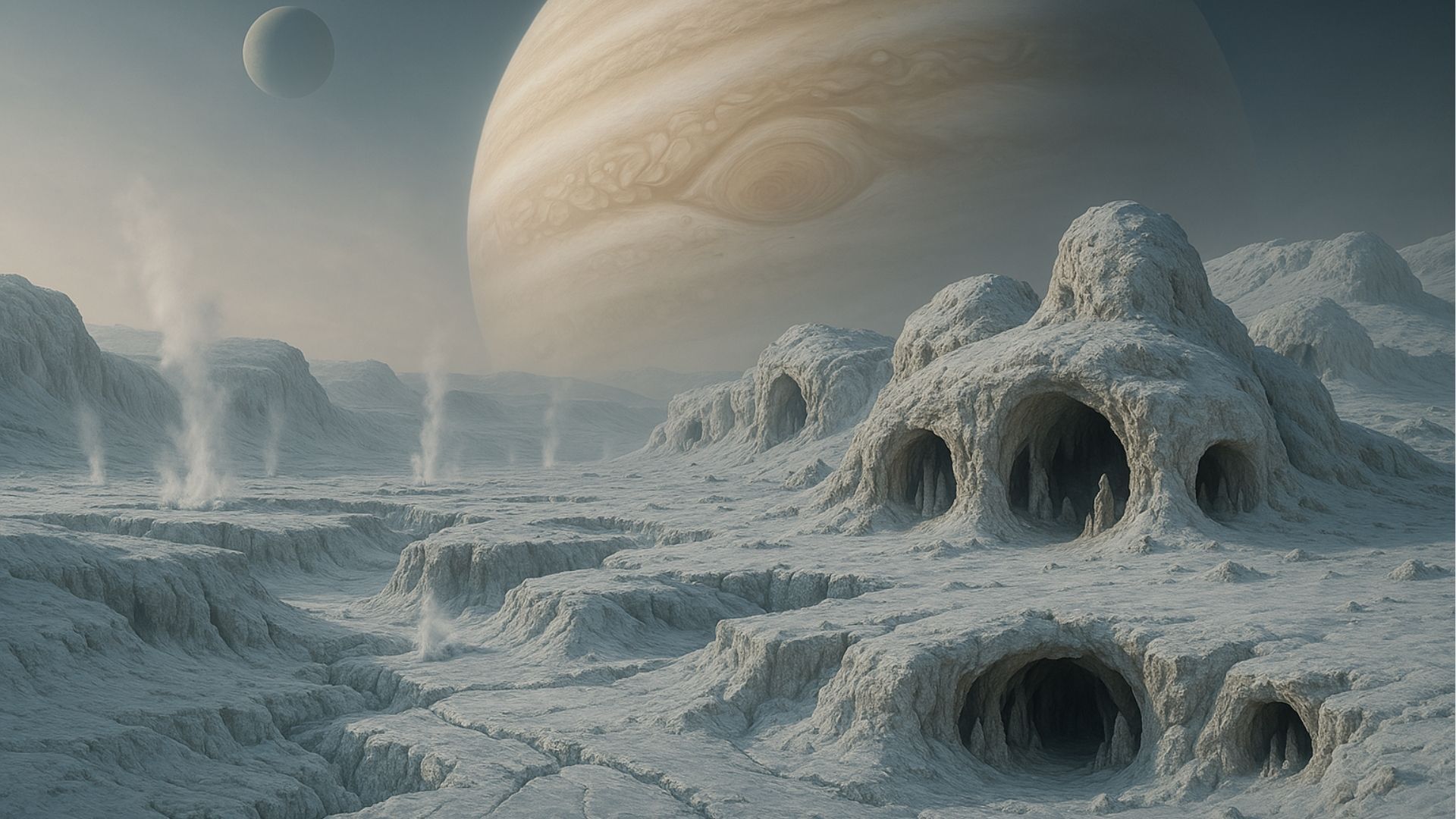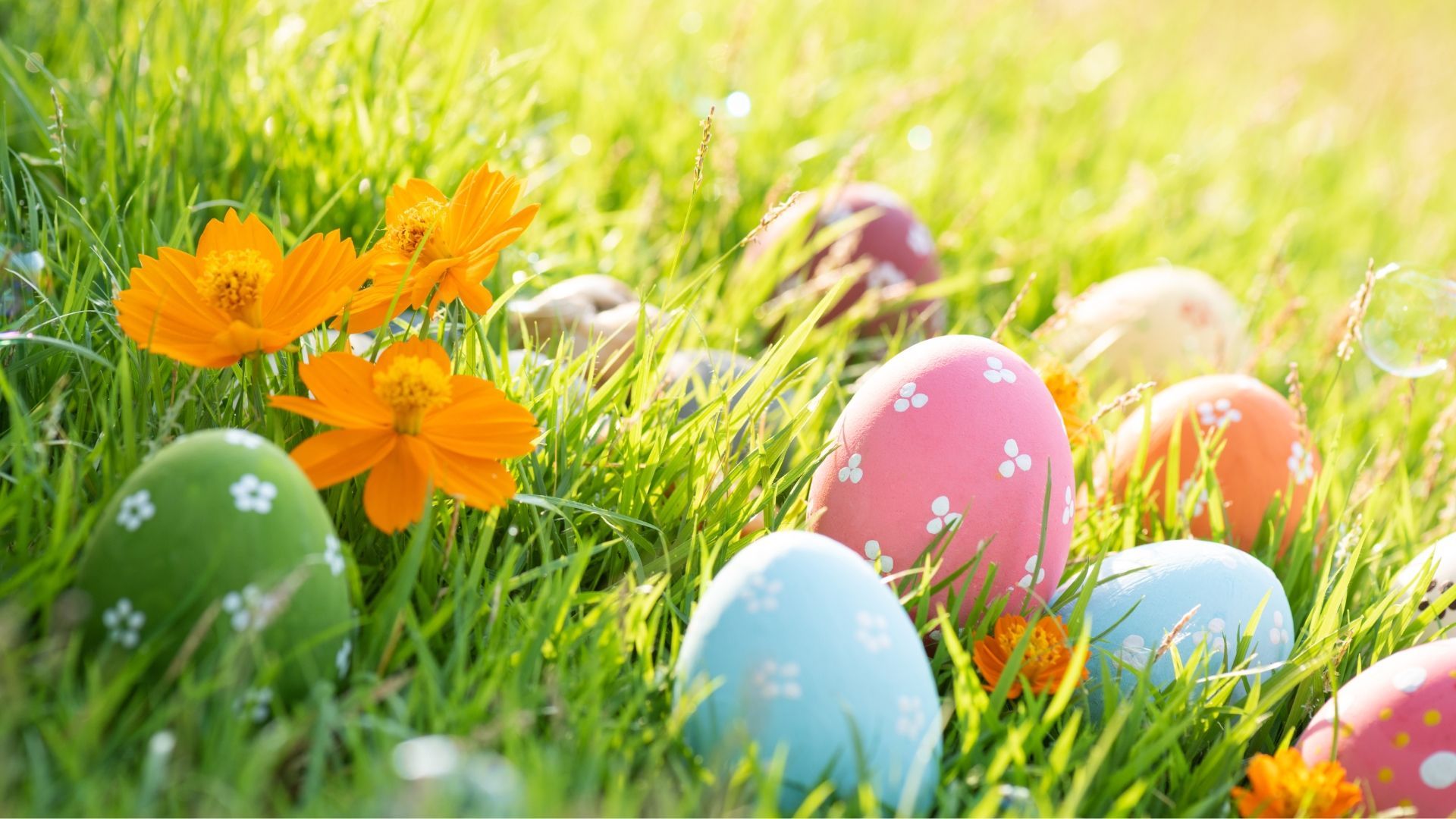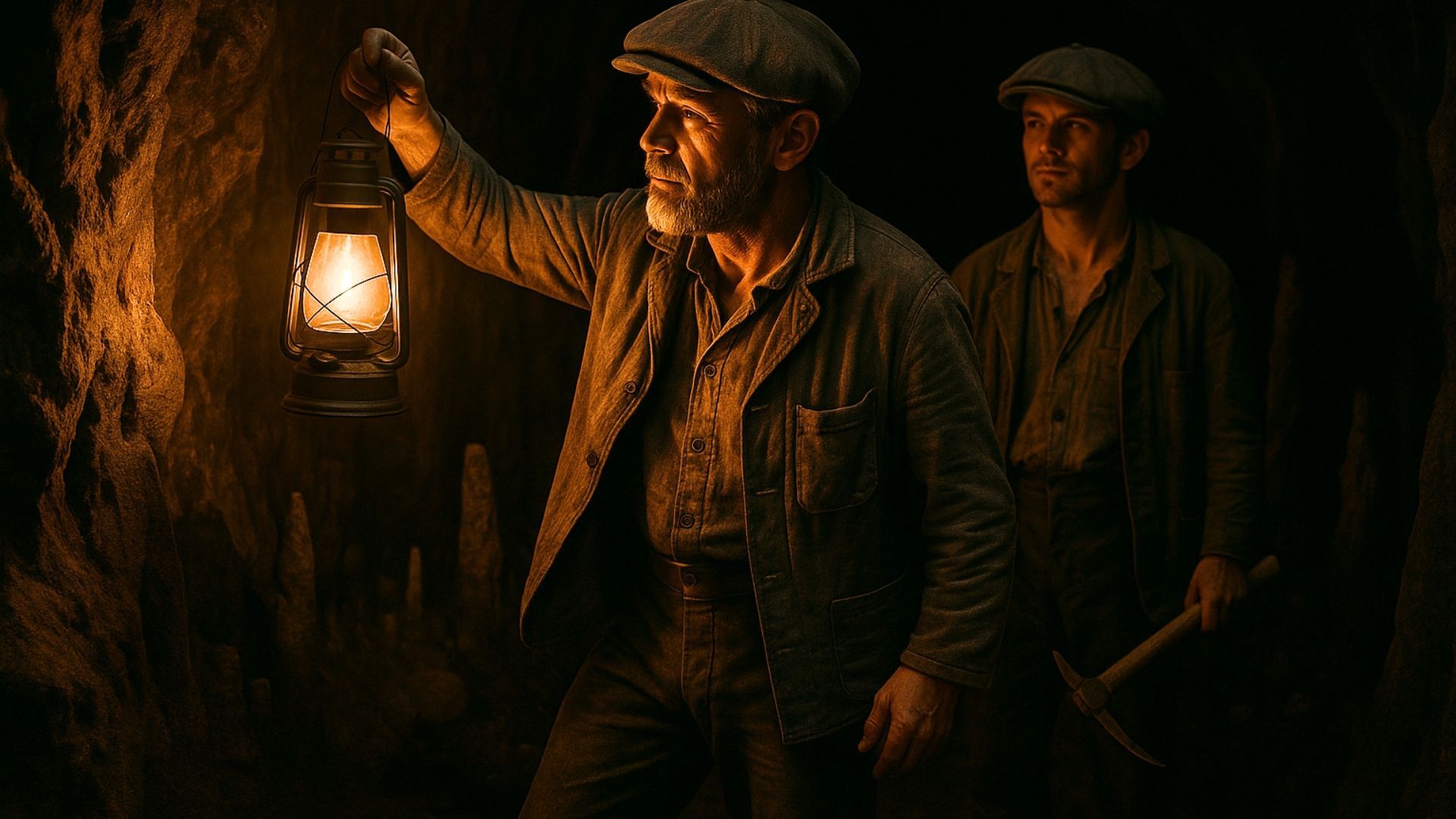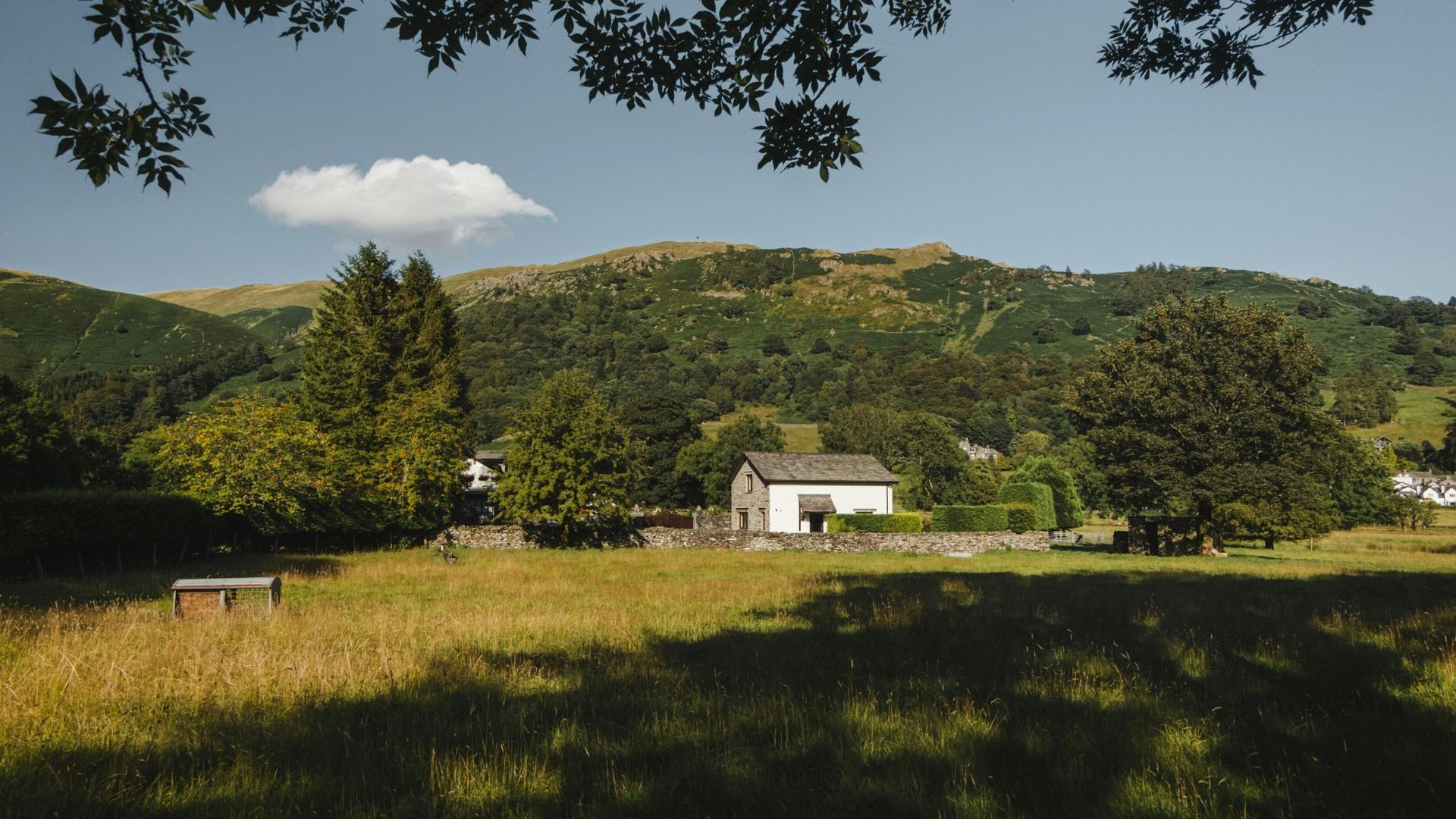Crystals are beautiful and mysterious. But have you ever wondered how they form? Prepare to be wowed…
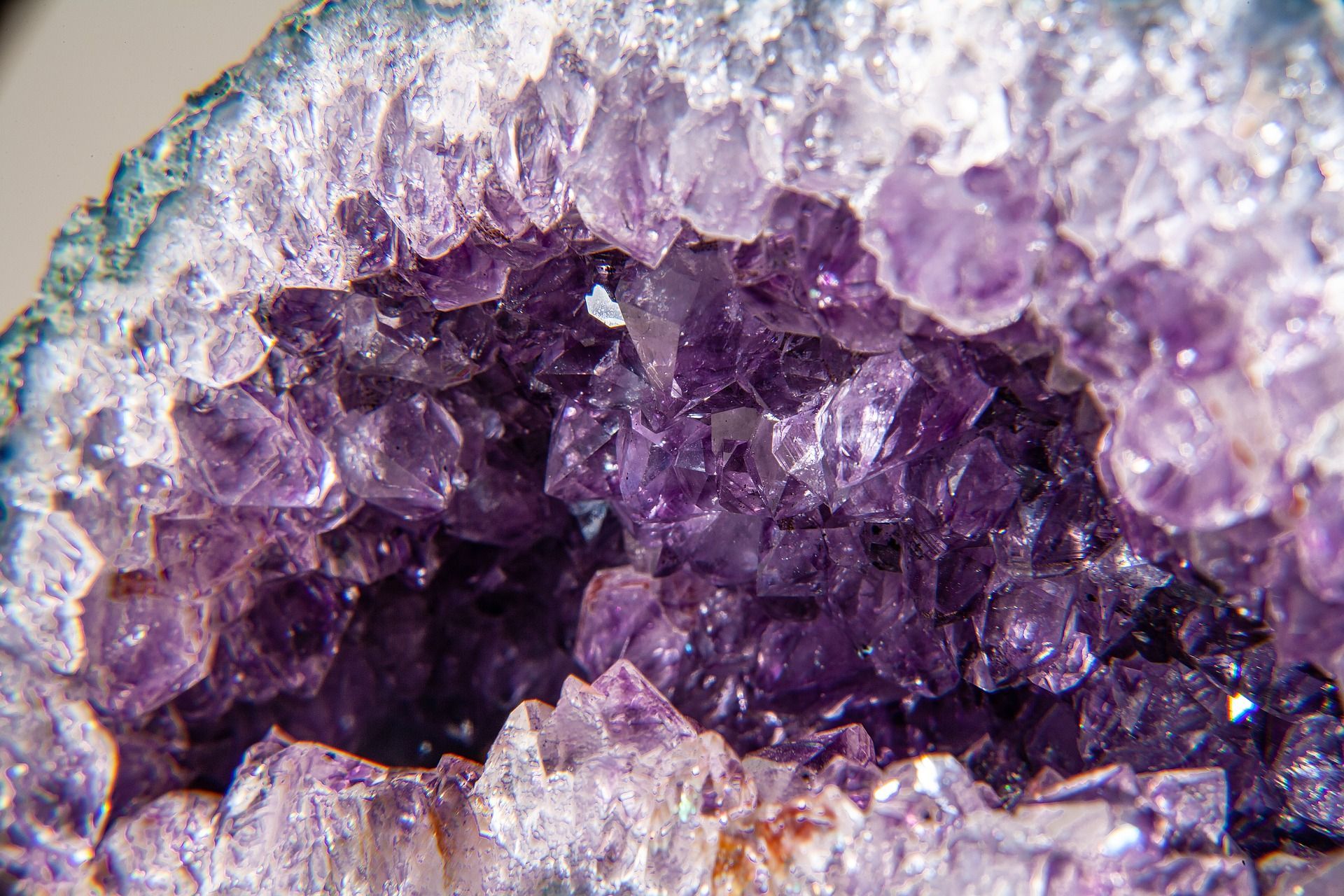
On a bright, sunny day in June, a child is playing on a swing set. The metal chains are hot on their hands as they fly through the air, higher and higher. The sun beats down – but they've no worries of sunburn. They enjoy the heat and light.
Meanwhile, in the troposphere – higher in the air than the child can imagine – something spectacular is happening. Atoms and molecules are screaming into one another at great velocities.
If one knocks into the other at just the right angle, they will stick to one another. This makes a microscopic crystal formation.
If it's high enough in the atmosphere, the cold, saturated conditions will cause other molecules to join the crystal. These molecules flying and sticking are
dihydrogen monoxide, otherwise known as water. And the crystals they form will become a cloud.
The cloud, as it gains size, rolls over the countryside, moved by atmospheric forces too complicated to explain in this article. (Look up "coriolis" and "convection" if you've got a hankering for science.)
The cloud moves over the playing child. It gives them a moment's respite from the heat of the sun. Miles above, it blocks some of the intense radiation from the middle-aged star of our solar system.
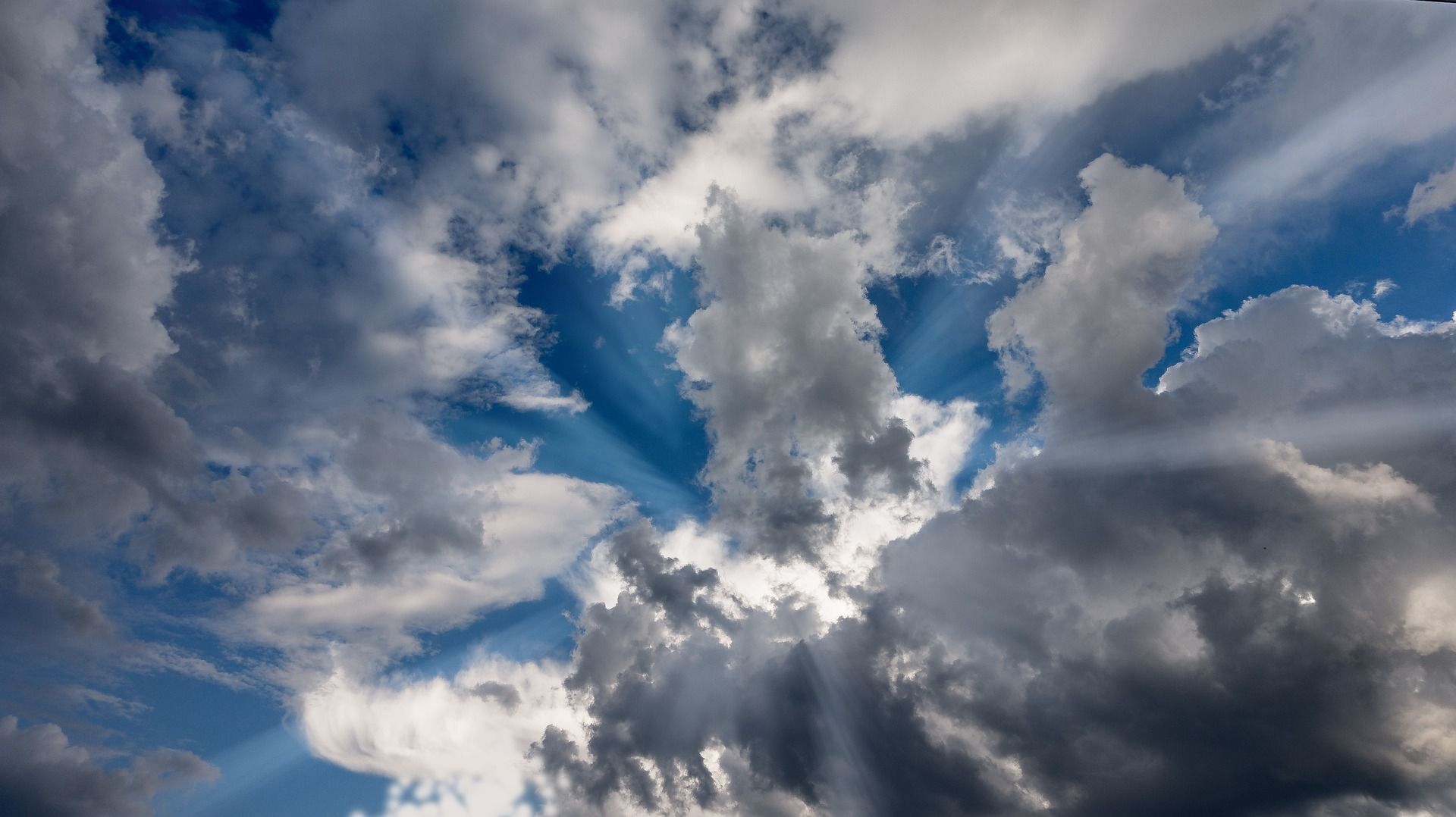
The momentary darkness reminds the child that it's time to go home. Then the cloud rolls on, becoming rain for some other rolling countryside.
These floating pockets of water are just one of many examples of naturally made crystals. This article will discuss the various ways crystals can be created – including in caves like Stump Cross Caverns.
What makes something a crystal?
A crystal is any pure substance.
What is a pure substance?
Well, all matter is made up of atoms and molecules. Scientists refer to something as "pure" if it's made up of only one type of molecule.
Often, things we think are pure are actually mixtures. Milk, for example, looks pure – but it's actually made up of dozens of different types of fat and protein molecules. Flour is also a mixture of different molecules found in grain.
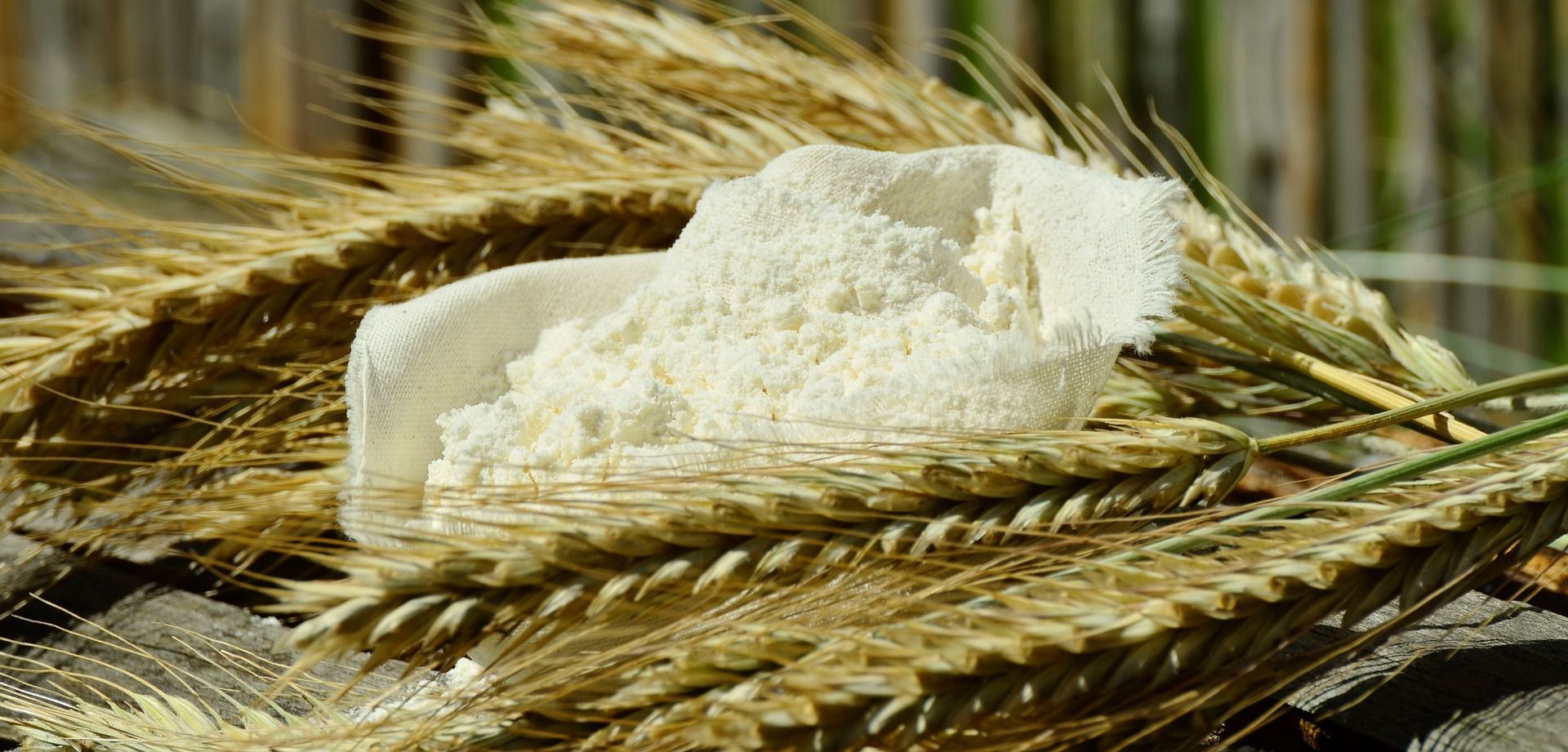
But sugar, like the kind you can buy in a bag, is a pure substance. Most shop-bought sugar is in the form of a molecule called sucrose. And it is, in fact, a crystal.
A crystal is any pure substance (made of one type of molecule) with a repeating structure. So, crystals are special types of pure matter that make repeating patterns. When viewed at a large scale, these repeating patterns are what give crystals their beautiful shapes and colours.
Two steps to the crystallisation process
1. Nucleation
Any crystal – whether it's made in a laboratory, a kitchen or deep within the Earth – is created in two distinct steps.
Step one is known as "nucleation". This is when the initial shape is made among the molecules that make the crystal.
Take table salt. If you hold some salt up to your finger, you'll see that it takes the shape of small blocks. This is the shape of the crystal.
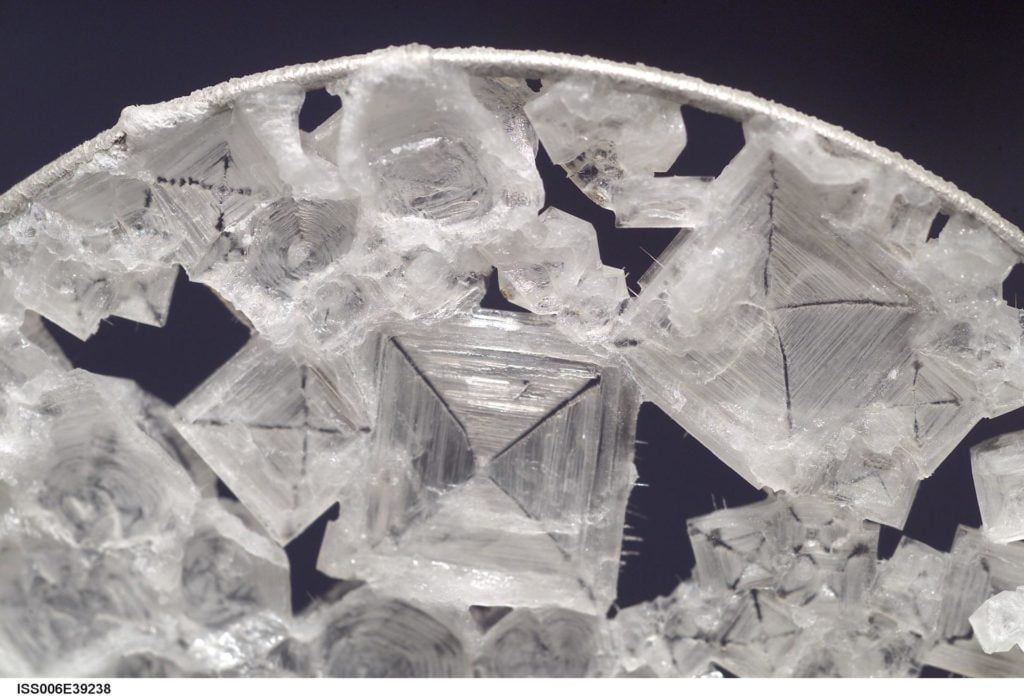
Table salt's molecular name is sodium chloride. This means one sodium atom and one chlorine atom, when attached, make up table salt.
One sodium atom is attached on the top and bottom, at 90-degree angles, by chlorine atoms. They form a block. Nucleation is the creation of the first block. When repeated, this creates the familiar blocky shape of salt.
Nucleation often requires a huge amount of energy. It is not easy to snap atoms and molecules into place. Conditions have to be just right.
We'll talk about what those conditions are below. For now, just think about how rare crystals are. This is partly why they're so rare: because the conditions to create them are difficult to replicate.
2. Growth
There's another step to this process that also requires specific conditions. This step has a much more mundane name: "growth".
Though its name is boring, the growth process can be fickle. For crystals to grow, the solution they're in has to be saturated.
What do we mean by "saturated"? Well, the non-scientific definition of saturation is when something becomes full – typically by filling in pores or openings. So if a cloth becomes soaked to the point that it can no longer absorb any more water, we call it saturated.
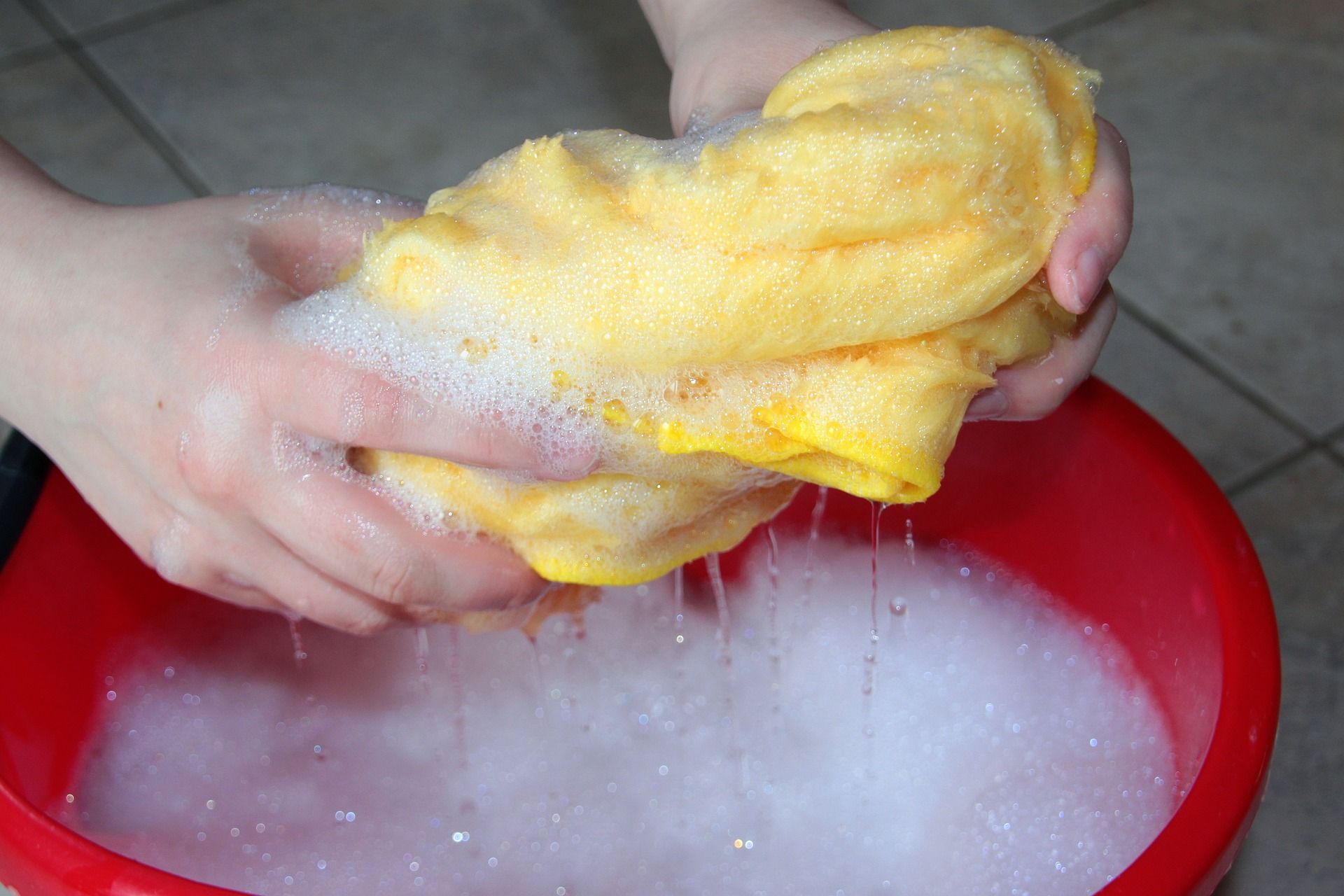
In science, saturation is usually associated with dissolving one chemical into another. So we can saturate air with moisture – or we can saturate water with salt.
So, in nature, saturation helps crystallisation. This is because it's easier for chemical crystals to grow if nucleation occurs near an area that's saturated with that chemical.
Growth is when the shape of the crystal spreads. In the case of table salt, one block attaches to another block – and then another. If conditions are right, all the surrounding sodium and chlorine can fold into the crystal shape – and huge, brilliant crystals can form.
One more thing: let's talk about supersaturation.
Supersaturation is when a substance becomes saturated under one set of conditions – and then those conditions change.
When the conditions change, there is even more dissolved chemical than the substance can normally hold. If nucleation occurs near a supersaturated substance, crystal growth is extremely quick. In fact, a sizeable crystal can be made in a matter of seconds – though making it quickly risks a decrease in size and purity.
Three types of crystal creation
When do nucleation and growth occur? There are three instances in which a crystal can be made. Two are natural and one is artificial.
1. Artificial
Crystals can be made in a laboratory or a kitchen. In these cases, nucleation occurs with what's known as a "seed crystal".
An already made crystal, like table sugar or dust from a gem, is placed in a saturated or supersaturated condition. This allows for controlled growth. Things like temperature, pressure and purity are controlled in artificial conditions to allow for slow growth, which yields a larger and more beautiful crystal.
2. Natural (with seeds)
Occasionally, nature can also create seed crystals. Perhaps sediment with crystals inside moved from one land formation to another with a saturated or supersaturated site. This can make new crystals form if the conditions are right.
3. Wholly natural
Rarely, huge amounts of energy can cause crystals to nucleate deep underground. This energy might come from a volcano, radioactive materials or the immense pressure of seismic forces inside the Earth's crust.
Then, if conditions are right for growth, large gems can form. These are what are mined and sold on an industrial scale.
What can crystals be used for?
Many of us know that crystals can be used for jewellery. But some interesting things happen when crystals have energy put through them.
If we put electricity through a crystal, it vibrates. Because crystals have a set structure, they (mostly) vibrate at a specific frequency.
This is how pocket watches and wristwatches operate. Electricity is run through quartz, which then vibrates at a predictable rate. This rate of vibration allows the clock to keep time, as it can move its hands after a certain number of vibrations. If those vibration rates divide well into factors of 12 or 60, we can create a fairly accurate watch.

If we put radiation through crystals, we sometimes get amplification. Amplification is when we change the amount of energy in a wave without changing its wavelength. Since the properties of radiation are related to their wavelengths, this comes in handy for scientists.
The best example is lasers. Lasers work by amplifying light radiation. Mirrors (or, in some cases, crystals), amplify a colour of light. The colour doesn't change because the wavelength is directly related to the colour. But the energy changes, which allows lasers to create dots on faraway surfaces – or even have enough energy to cut substances like diamonds.
By the way, diamonds are crystals. So we're using crystals to cut other crystals!
Where can I find some of these crystals?
Crystals are usually underground since the activation energy needed for nucleation is often found there. So, a cave is the best place to go crystal hunting.
Stump Cross Caverns, for instance, is an underground cave made of ancient limestone. This limestone is mostly made up of calcite – a crystal form of calcium and carbon.
If you
visit Stump Cross today, you can see these crystals in their abundant glory. They were formed – believe it or not – over millions of years, as water pressure slowly compacted calcite deposits into dense, hard rock.
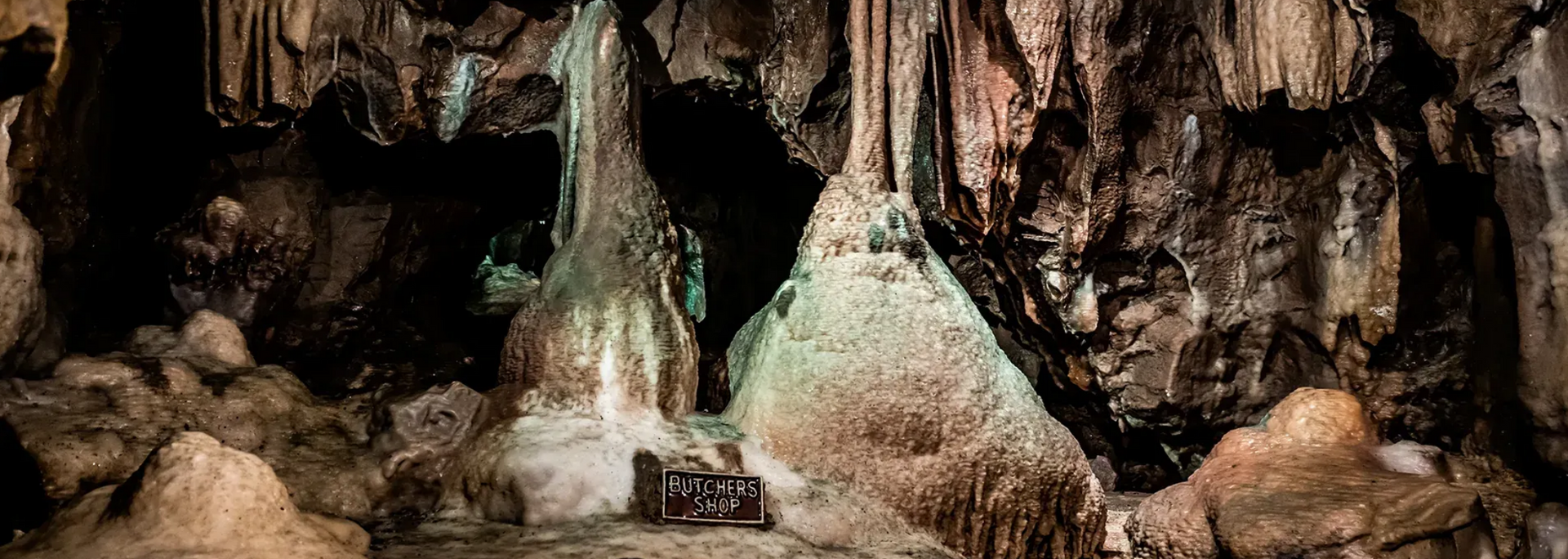
And here's another awesome thing about crystals: some of them glow.
If you join us after 3 pm, you can take part in our UV experience. You'll get a special UV torch to use as you explore. If you shine it on the limestone walls, you'll see the crystals light up like strange alien lamps. Cool!
Want to test your knowledge of rocks, crystals and the Stone Age? Try our fun and educational
Key Stage 2 activities.




